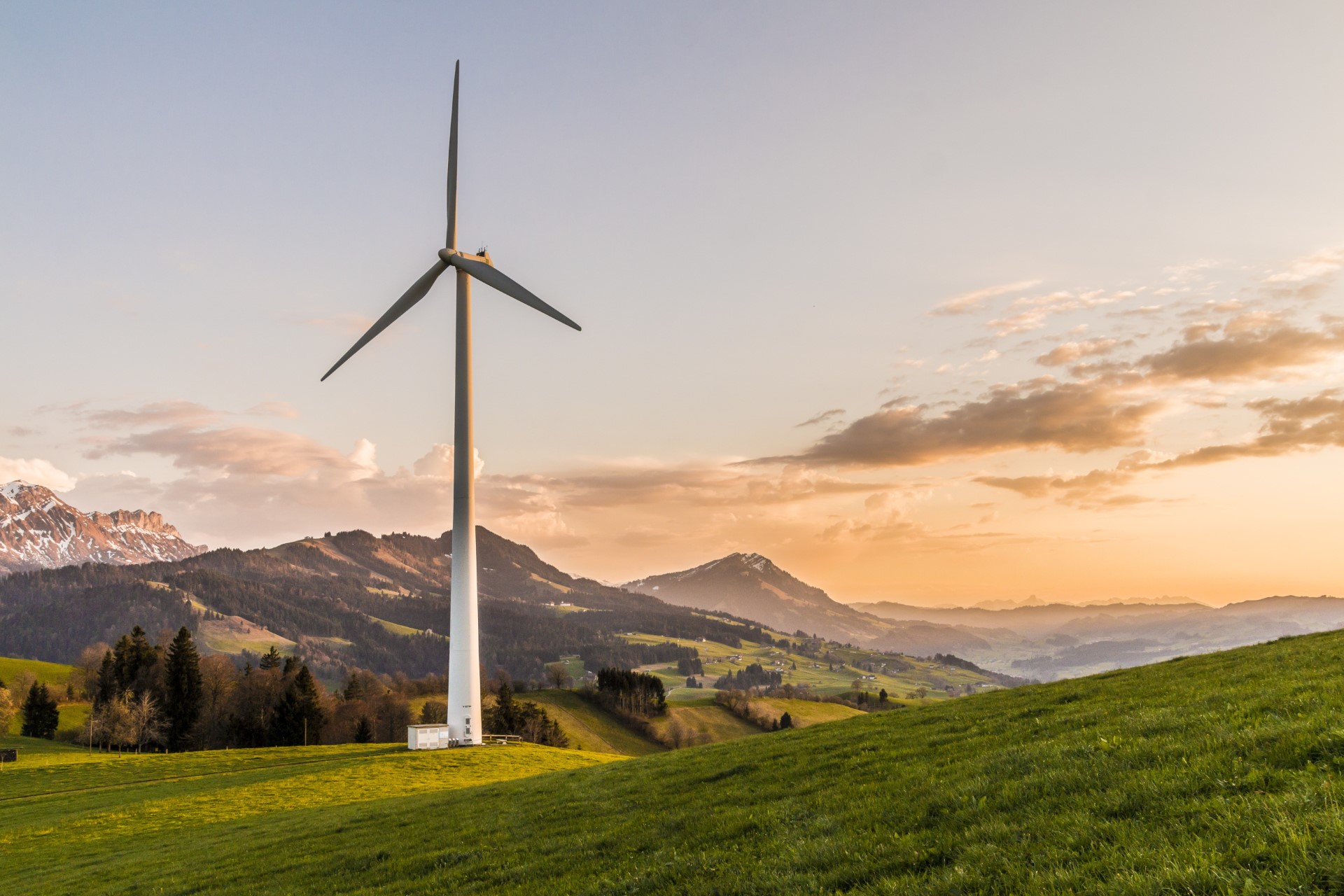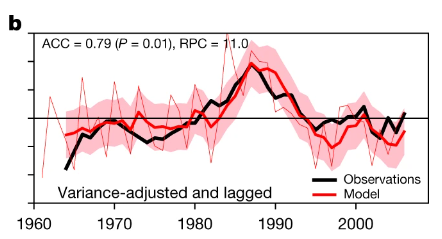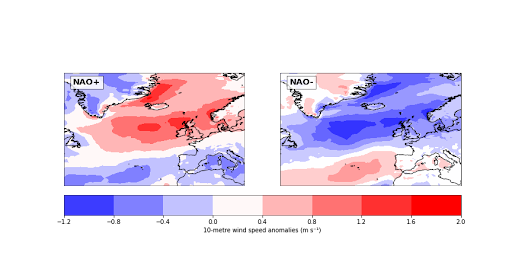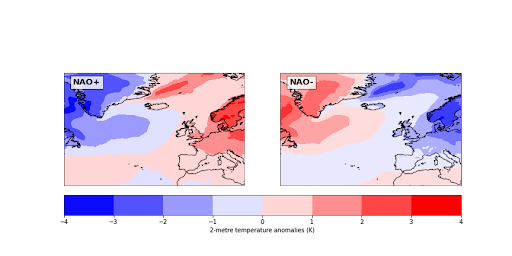

How could decadal forecasts help the energy sector plan for climate variability?
Decadal forecasts have the potential to provide great value for the energy sector, by enabling them to plan for climate variability years - and decades - in advance. In this guest blog post, Ben Hutchins, from the Meteorology Department at the University of Reading, explains how they could provide value to the energy sector.
Power systems around the world are undergoing massive changes in response to the challenge of climate change. To meet climate mitigation targets, power systems are becoming increasingly reliant on renewable energy generation, by using wind turbines and solar photovoltaics.
As more renewables are deployed, power systems become more sensitive to variation in the weather conditions, particularly fluctuations in wind speed and solar radiation. Not only do the weather conditions affect electricity generation, but they also affect demand. In the UK, we typically experience ‘heating-driven demand’ where during colder conditions (normally during winter) the demand for electricity is higher. This makes it increasingly challenging for power system operators, such as National Grid, to maintain a continuous match between electricity-demand and electricity-supply.
Of particular concern are ‘dunkelflaute’ or ‘dark wind lull’ events, where overcast (low solar generation) and still (low wind generation) conditions lead to a huge drop in the amount of electricity generated by renewables. Often, these conditions occur in the winter alongside cold temperatures, leading to energy shortfall events. This means that the increased demand cannot be met by renewable electricity supply.
When such events occur in the UK, this shortfall is often mitigated by using backup coal plants. This was the case at the end of last winter, when coal plants were put on standby ahead of the coldest night of the year. Being able to predict the likelihood of 'dunkelflaute' events occurring in the upcoming winter will be crucial for balancing the grid and reducing reliance on fossil fuel sources in future power systems.
Predicting climate variability
As the utilisation of renewable energy technologies increases, power systems become increasingly sensitive to climate variability. Consequently, there is interest in quantifying how climate variability and climate change will affect power systems over the coming years and decades.
Seasonal and decadal forecasts, which are produced by weather centres across the world, help to quantify climate variability. These forecasts aim to predict the average conditions over the coming months (seasonal) and years (decadal). To do this, they account for the initial conditions (the state of the climate right now), and the background conditions (projected changes in greenhouse gases, aerosols, and other variables). Decadal forecasting is of particular interest to the energy sector, as both natural climate variability and anthropogenically induced climate change are important on this timescale.
Decadal forecasts aim to predict how slowly-evolving components of the climate, such as the transport of heat in the oceans, will change over the next few years, and how this is likely to impact the atmosphere. When forecasting on longer timescales, randomness plays a large part in how the climate will vary. To account for this many forecasts are made (sometimes hundreds), each with slightly different conditions, to give a range of possible future states. This is known as ensemble forecasting.
The likelihood of future conditions can be assessed by comparing the different forecasts, or ensemble members. If the members all predict similar future states, there is more confidence in the forecast. However, if the members show lots of variability, there is much uncertainty about what conditions will actually occur. Ensemble forecasts are therefore useful, not only for forecasting the future climate, but also quantifying the uncertainty in these predictions.
Even when dealing with yearly averages, decadal predictions might still be useful. Being able to anticipate low wind years, such as 2021 where much of western Europe experienced the lowest wind speeds in 40 years, would enable mitigating actions, such as demand flexibility services or backup generation, to be taken in advance. This would not only help to prevent blackouts and disruption, but also encourage power system adaptation.
Decadal forecasts are starting to show skill
Until recently, it has been believed that decadal forecasts have limited skill in predicting the evolution of climate, however recent research has demonstrated surprising skill over the North Atlantic (Smith et al., 2020). The researchers found that the variability of the North Atlantic Oscillation (NAO), the atmospheric pressure see-saw which drives weather conditions over western Europe, is predictable on decadal timescales (see Figure 1).
The NAO describes the difference in mean sea-level pressure between the Icelandic Low and the Azores High. During NAO positive conditions this difference is larger than normal (i.e. higher than normal Azores High and lower than normal Icelandic Low) which drives stronger westerly winds across the North Atlantic. Whereas during negative NAO conditions, this difference is smaller than usual (i.e. lower than normal Azores high and higher than normal Icelandic Low) and westerly winds are weaker.

Figure 1: Retrospective decadal forecasts of the winter (DJFM) North Atlantic Oscillation. The observations are shown by the black line and the decadal prediction (forecast) is shown by the thick red line. Source: Smith et al. (2020).
The predictability of the NAO is useful for the energy sector, as much of the winter variability in wind speed and temperature over Europe is driven by this see-saw. In a positive NAO phase (see figures 2 and 3), conditions over the UK are generally warmer and windier than average. While during a negative NAO phase, conditions tend to be colder and more still than average. This means that the phase of the NAO is linked to the UK energy system. More negative NAO conditions can cause higher demand (via colder temperatures) and lower supply (via lower wind speeds), and vice versa.

Figure 2: Wind speed anomalies during positive (+) and negative (-) NAO conditions.
If the relationship between the NAO phase and an energy system metric, such as winter wind energy generation over the North Sea, is sufficiently strong, then this can be combined with a skillful decadal forecast of the NAO to create a decadal forecast of wind energy output over the North Sea. This is currently one of the active goals of my PhD research.

Figure 3: Temperature anomalies during positive (+) and negative (-) NAO conditions.
Decadal forecasts are still the subject of active research
As the World Meteorological Organization’s (WMOs) lead centre for annual-to-decadal climate prediction, the UK Met Office is one of the world’s leading organisations for decadal forecasting. Decadal forecasts, coordinated by the Met Office, were used operationally in the WMOs 2023 Global Annual to Decadal Climate Update to determine that the 1.5°C threshold is likely to be crossed within the next five years. This demonstrates the importance of decadal forecasts for society, in how they provide predictions within a timescale on which action can be taken.
Although applying decadal forecasting to the energy sector is still an active area of research, there are early signs that it might be useful for the operation and management of renewable energy dependent power systems. There is much more to come in this area - watch this space!
More issues to solve
This is just one example of how weather and climate science is becoming increasingly valuable to the energy sector. There are many open questions, and many companies have yet to fully realise the advantages that incorporating meteorological data can bring. This spans operational challenges, like balancing supply and demand, ensuring network resilience, like this example from SSEN, and being prepared for energy price fluctuations in the upcoming season.
All of these topics will be discussed in detail at the Royal Meteorological Society’s Energy, Weather and Climate Forum on 12 October. This event will allow industry experts, academics and policymakers to come together to discuss current energy, weather and climate knowledge, and identify gaps and challenges that need addressing.
Sign up to our Energy SIG mailing list to hear more about the work we do.
Sign up to our Energy, Weather and Climate Forum to take part in conversations like this!
References:
Smith, D.M., Scaife, A.A., Eade, R., Athanasiadis, P., Bellucci, A., Bethke, I., Bilbao, R., Borchert, L.F., Caron, L.-P., Counillon, F., Danabasoglu, G., Delworth, T., Doblas-Reyes, F.J., Dunstone, N.J., Estella-Perez, V., Flavoni, S., Hermanson, L., Keenlyside, N., Kharin, V., Kimoto, M., Merryfield, W.J., Mignot, J., Mochizuki, T., Modali, K., Monerie, P.-A., Müller, W.A., Nicolí, D., Ortega, P., Pankatz, K., Pohlmann, H., Robson, J., Ruggieri, P., Sospedra-Alfonso, R., Swingedouw, D., Wang, Y., Wild, S., Yeager, S., Yang, X., Zhang, L., 2020. North Atlantic climate far more predictable than models imply. Nature 583, 796–800. https://doi.org/10.1038/s41586-020-2525-0

